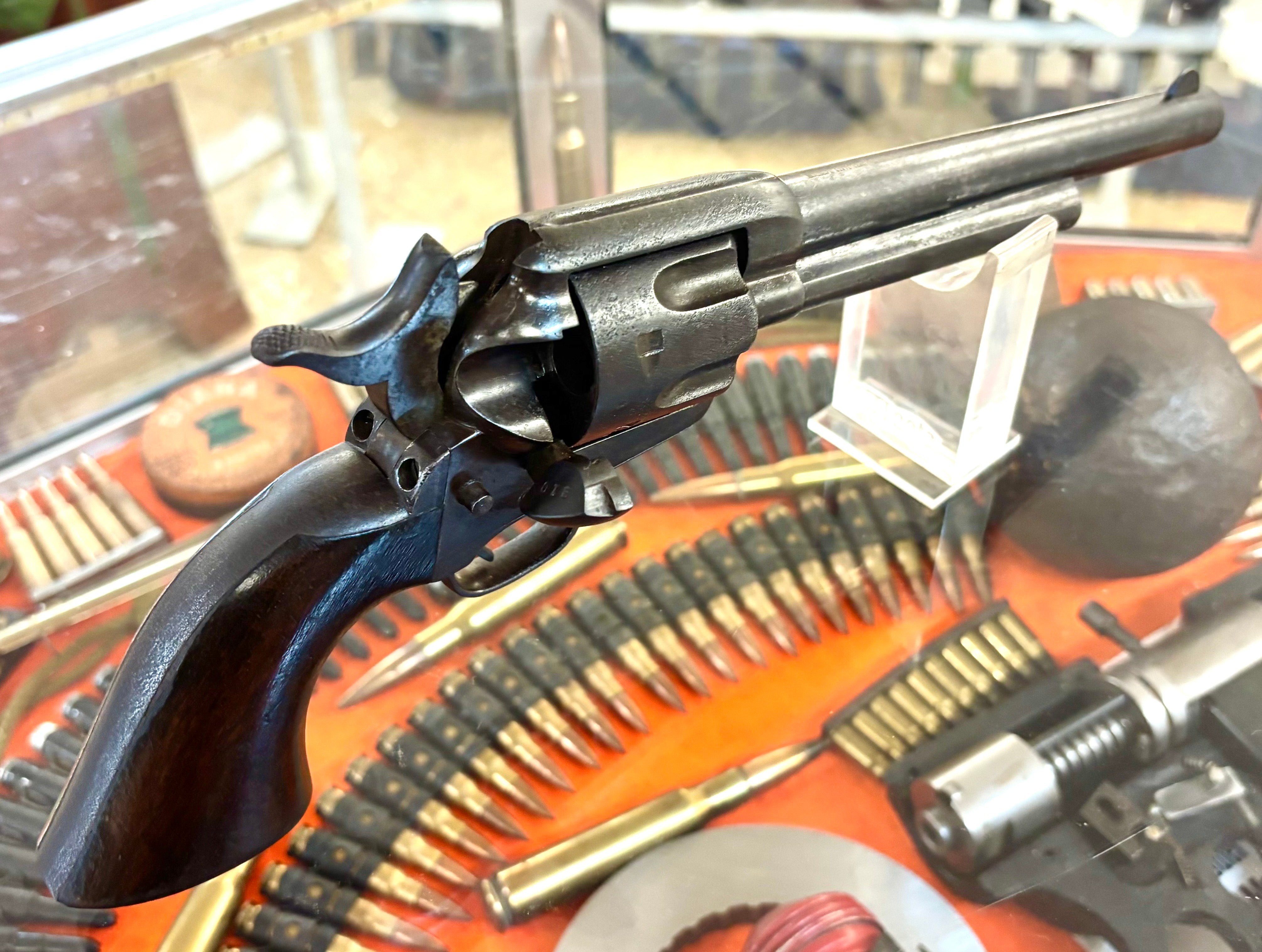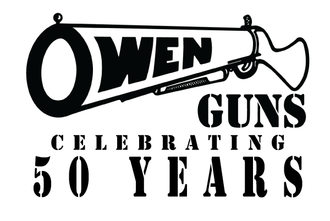
Colt Single Action Army 1873 Model

This week for firearm Friday we are showcasing the Colt Single Action Army 1873 Model. Our Colt is manufactured in 1883 in Pall Mall and is chambered in 455 Colt, it was made as an officers pistol and has the lugs to mount the extended stock onto it.

The Colt 1873 Single Action Army Revolver, also known as the Colt .45, the Frontiersman, the Peacemaker, but most often as simply the Single Action Army (or SAA) was a single-action revolver manufactured and produced by Samuel Colt Firearms beginning in 1873. It is the firearm most commonly identified with the American Wild West and the 19th Century in general, for its widespread popularity with both civilian and military users, its appearance in numerous sensationalist news stories about shootouts, and its association with the most famous duelists and marksmen of that era, including "Wild Bill" Hickock, William H. "Billy the Kid" Bonney, the Earp brothers, and even with later figures such as General George S. Patton. Another of its nicknames is "The Gun That Won The West."

The Single Action Army action is a refinement of the earlier Colt percussion revolvers and the Colt 1871 cartridge revolver. The cylinder is mounted on a central axis and operated by a hand with a double finger with which more extended action allows the cylinder-ratchet to be cut in a larger circle, giving more torsional force to the cylinder. Four notches on the face of the hammer engage the sear portion of the trigger, affording four basic hammer positions. The hammer rests within the frame when it is fully lowered. Drawn slightly to the rear, the hammer engages the safety notch of the sear and holds the firing pin out of direct contact with a chambered cartridge. Like the earlier percussion revolvers, the Single Action Army was designed to allow loading of all the chambers.

The safety notch replaced pins on the rear of the percussion revolver cylinders, which served the same purpose as the safety position; that is, preventing hammer contact with the primer/percussion cap. According to the original instructions from Colt, as well as the U.S. Army Ordnance Department, the revolver was to be carried with all six chambers loaded and carried with the hammer half-cocked in the safety notch. However, beginning sometime after the Second World War and after the introduction of the Second Generation single action in the 1950s, some gun-writers began strongly advocating the practice of leaving one empty chamber under the hammer. It is likely this was recommended after the Second World War because with the changed tolerances of the re-designed Second Generation Single Action Army, a sharp blow could damage the re-designed half-cock mechanism and allow a fully loaded revolver to fire. Drawn back about halfway, the hammer engages the second notch. This cams the cylinder bolt out of engagement and allows the cylinder to rotate for loading. Fully cocked, the revolver is ready to fire. Cartridge ejection is via the spring-loaded rod housed in a tube on the right side of the barrel.

It is possible to fire the SAA rapidly by holding down the trigger and "fanning" the hammer with the other hand. Ed McGivern dispelled the myth of the inaccuracy of this procedure by shooting tight groups while fanning the revolver.

The power, accuracy and handling qualities of the Single Action Army (SAA) made it a popular sidearm from its inception, well into the 20th century. The association with the history of the American West remains to the present century, and these revolvers remain popular with shooters and collectors. George S. Patton, who began his career in the horse-cavalry, carried a custom-made SAA with ivory grips engraved with his initials and an eagle, which became his trademark. He used it during the Mexican Punitive Expedition of 1916 in a gunfight with two of Pancho Villa's lieutenants and carried it until his death in 1945 shortly after the end of World War II. It remains on display, along with the SAA carried by actor George C. Scott portraying Patton in the 1970 film by the same name at the General George Patton Museum of Leadership at Fort Knox, KY as of 2022. Villa himself used a 5-inch barrell Colt Bisley in 44-40 caliber for the full length of his military career.

In the early and mid-20th century, original Peacemakers lacking historical provenance and not in pristine condition were not particularly valuable. They served as raw material for early enthusiasts such as Elmer Keith, Harold Croft and R. F. Sedgley who modified the revolvers to enhance performance and experimented with more effective ammunition. At the beginning of the 21st century, first- and second-generation SAAs are highly regarded as collectors' items and often considered too valuable to shoot.

After World War II, new interest in the SAA started and firearms enthusiast William R. Wilson recognized the need and the opportunity. In 1953 Wilson founded the Great Western Arms Company to produce an almost-exact clone of the old Colt SAA for television and movie westerns. The Great Western revolvers were manufactured in Los Angeles.

Later Colt editions are more common, and various copies and near-copies of the revolver are made by Uberti of Italy. Uberti is now owned by Beretta, producer of the Beretta Stampede. American manufacturers include Colt Manufacturing Company, which still retains the model in its catalog. Until its dissolution in 2017, U.S. Fire Arms Mfg. Co. built several variations true to the original first- and second-generation specifications. STI International has introduced a very precisely made Single Action Army with a modified hand/spring assembly designed to last longer than the originals.

The Single Action Army is the precursor and inspiration for modern sporting revolvers from John Linebaugh, Freedom Arms, Ruger, Cimarron, and others.













